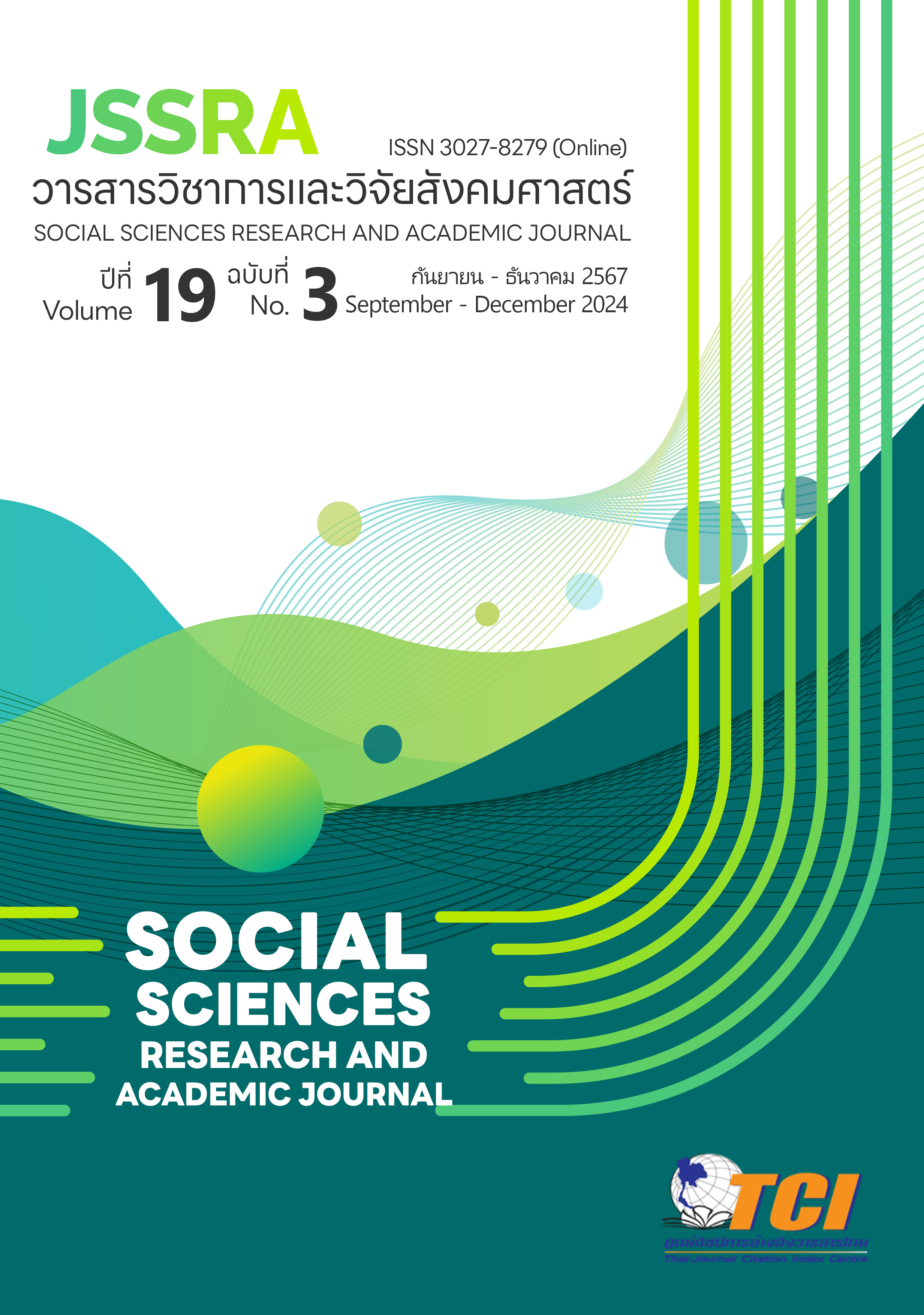A Study on Innovator Factors of Nakhon Sawan Rajabhat Universitys’ Teacher Students
Main Article Content
Abstract
The objective of this research was to analyze the components of the innovator of teacher student’s at Nakhon Sawan Rajabhat University. The sample group used for exploratory factor analysis (EFA) was 600 teacher students in first year to fourth year in the Faculty of Education, Semester 2 Academic Year 2023 at Nakhon Sawan Rajabhat University which obtained through multi-stage random sampling. The research instrument was a questionnaire with a 5 Likert rating scale. The consistency index was equal to 1.00 for all items. The confidence value was equal to 0.99. The statistics used in exploratory factor analysis were extracting elements using principal component analysis and orthogonally rotating the component axes using the Varimax method. The summary of the results of the analysis in which examining the relationship between variables by considering indicators with component weights of 0.3 or more and considering the total variance of components with an Eigen Value greater than or equal to 1.0 and having a number of indicators in each element from 3 or more (Three Indicator Rule).
The research results was found that the components of the innovator indicators of teacher student’s at Nakhon Sawan Rajabhat University consisted of 8 components and 46 indicators. The components were creativity, work challenge, commitment and intention, innovative thinking, communication, teamwork, risk acceptance, and problem solving. The 8 components explained 43.274 Percent of the variance with each component explaining 6.432, 6.290, 5.786, 5.231, 5.123, 4.997, 4.906, and 4.501 Percent of the variance, respectively.
Article Details
References
Burns, N. and Grove, S. K. (2001). The Practice of Nursing Research: Conduct, Critique, & Utilization. (4th ed.). Philadelphia: W.B. Saunders.
Hair, J. F., Jr., Black, W. C., Babin, B. J. and Anderson, R. E. (2010). Multivariate Data Analysis. (7th ed.). Upper Saddle River, NJ: Pearson.
Jumini, J. (2023). Development of Teacher Innovativeness Instruments in the Face of Educational Innovation. Ideguru: Jurnal Karya Ilmiah Guru, 8(2), 247-256.
Klaichan, P. (2020). A Model for Fostering Innovation for Undergraduate Programs in Private Universities in Thailand. Journal of Social Sciences and Buddhist Anthropology. 6 (8), 236-252.
Kožuh, A. (2020). Didactic Skills in the Field of Developing Creativity and Innovativeness of Student. International Journal of Cognitive Research in Science, Engineering and Education (IJCRSEE), 8(1), 69-79.
Margaret Vaughn and Seth A. Parsons. (2013). Adaptive Teachers as Innovators: Instructional Adaptations Opening Spaces for Enhanced Literacy Learning. Digital Learning in Teacher Education. 91(2), 81-93.
Mayhew, M. J., Rockenbach, A. N., Bowman, N. A., Seifert, T. A. and Wolniak, G. C. (2016a). How College Affects Students: 21st Century Evidence That Higher Education Works. (3rd ed.). San Francisco: Jossey Bass.
Mayhew, M. J., Simonoff, J. S., Baumol, W. J., Selznick, B. and Vassallo, S. (2016b). Cultivating Innovative Entrepreneurs for the 21st Century: A Study of U.S. and German Students. Journal of Higher Education, 87(3), 420-455.
Meesuwan, W. (2017). Factors Affecting the Characteristics of Innovative Teachers in Educational Technology in Educational Institutions for Teaching Operations in the Naresuan University Network. Naresuan University Journal of Education, 19(3), 50-62.
Muangsrichan, K. (2021). Management Model for Developing Innovative Characteristics of Students in Educational Opportunity Expansion Schools. Doctoral Dissertation of Education, Naresuan University.
Nonglak, W. (1999). Model LISREL: Statistical Analysis for Research. Bangkok: Chulalongkorn University Press.
Pradhan, J. S. (2018). Innovations and Initiatives in Teacher Education. ZENITH International Journal of Multidisciplinary Research, 8(5), 116-124.
Pittayasenee, M. and Rueangrong, P. (2021). Guidelines for Promoting Innovative Characteristics of Student Teachers at Lampang Rajabhat University. Lampang Rajabhat University Journal, 10(2), 80-92.
Selznick, B. and Mayhew, M. (2018). Measuring Undergraduates’ Innovation Capacities. Research in Higher Education. 59. 1-21.
Sugiarti, A., Sumardi, S., Hidayat, R. (2023) Peningkatan Keinovatifan melalui Penguatan Kepemimpinan Transformasional dan Iklim Organisasi. SAP (Susunan Artikel Pendidikan), 8(1), 59 – 69.
Supriyatna, Supriyatna., Isman, Kadar., Diana, Wulandari. (2023). Strengthening Organizational Culture, Transformational Leadership, Self-Efficacy, and Achievement Motivation in Increasing Innovation Efforts. International Journal of Social Health, 2(5), 202-216.
Teachers Council Regulations on Professional Standards (No. 4) B.E. 2019. Retrieved April 10, 2024 from http://www.krusmart.com/wp-content/uploads/teacher_standard2562.pdf
Wanichchamp, K. (2008). Advanced Statistics with SPSS for Windows. Bangkok: Chulalongkorn University Press.
Yuyuen, P., Phumiota, A. and Sriyothin, S. (2017). Factors Affecting Innovatorship: A Case Study of PUNN Product. Papers from the 4th National Academic Conference on Public Administration “Public Administration under Thailand 4.0”. Retrieved April 9, 2024, from https://conference.kku.ac.th/colaimg/files/articles/b9e07-o-76-.pdf


